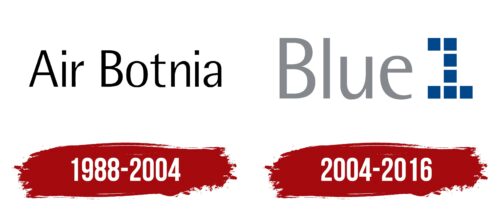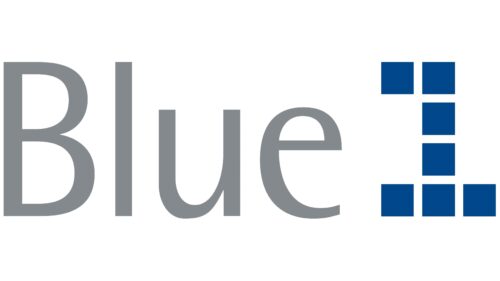The logo of Blue1, a former Finnish airline, symbolized the company’s aim to connect Scandinavian destinations with the rest of Europe. It conveyed a sense of dynamism and forward movement, reflecting Blue1’s role in facilitating regional and international travel. Founded in 1987 as Air Botnia and rebranded in 2004, the logo incorporated elements that highlighted its Finnish roots and exemplified Scandinavian simplicity and functionality. This emblem represented the airline’s mission to offer orderly, reliable service meeting the needs of travelers seeking business and leisure opportunities throughout Europe.
Blue1: Brand overview
Blue1 started in 1987 as Air Botnia, a small regional airline based in Vantaa, Finland. Initially offering charter and regular flights within Finland, it expanded its services across Europe and upgraded its fleet with new aircraft like the Avro RJ85 and ATR 72.
In 1998, Scandinavian Airlines (SAS) bought a major share in the airline. This partnership provided the financial support and expertise needed to succeed in a competitive market. Despite this, the late 2000s were challenging due to the 2008 financial crisis, which reduced demand for flights and increased costs from high fuel prices. The company made several adjustments to cope, such as cutting less profitable routes and updating its fleet.
By the 2010s, it was clear that a new direction was needed. In 2015, the Irish airline CityJet decided to buy the company from SAS. This acquisition was intended to leverage CityJet’s experience and connections to foster improvement. Combining the two companies proved difficult, and in 2016, the company was fully merged into CityJet, ending its run as an independent brand.
Meaning and History
What is Blue1?
It was a Finnish airline, a subsidiary of Scandinavian Airlines (SAS). It operated regional and short-haul flights mainly within Europe, connecting major cities and destinations and offering various classes of service, including economy and business class. The airline provides a comfortable travel experience thanks to its modern fleet and convenient flight schedule. The company ceased operations, and its routes and services were integrated into SAS, further strengthening SAS’ presence in the Nordic region.
1988 – 2004
Blue1, originally known as Air Botnia, operated under this name from 1988 to 2004. During this period, its logo shaped the brand and its market perception. The black color of the logo was deliberately chosen to symbolize the night flights that marked the beginning of the carrier’s operations. This color was associated with the night sky, emphasizing the airline’s focus on evening and night flights and its ability to provide services anytime.
The thin and elegant letters in the Air Botnia logo were aesthetically pleasing and carried specific meanings. They embodied the lightness and efficiency of the airline’s short-distance flights, which were the company’s primary focus then. These flights involved delivering small cargoes and serving a limited number of passengers, requiring the airline to maintain special logistics and organization.
2004 – 2016
The Blue1 logo blends two distinct styles. “Blue” is written in neat, thin gray letters with a slightly asymmetrical font. Next, the numeral “1” is composed of seven blue squares, adding an element of precision.
The gray letters convey accessibility and simplicity. The blue squares forming the “1” add strictness and rigor, reflecting the company’s business-oriented approach to air transportation. This combination shows the company’s balance of friendly customer service with high-quality performance.
The thin gray letters of “Blue” highlight the airline’s customer-friendly ethos. The font’s asymmetry introduces a subtle uniqueness. The blue squares constructing the “1” symbolize structure and reliability, emphasizing the airline’s dedication to precision and professionalism.
The juxtaposition of soft, inviting text and firm, geometric numeral creates a harmonious balance. This design effectively communicates the airline’s focus on delivering a welcoming experience while maintaining stringent operational standards.






